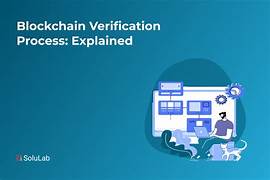How Can Blockchain Support Digital ID Verification?
In today’s increasingly digital world, the need for secure, reliable, and efficient digital identification (ID) verification systems has never been more critical. From online banking and government services to social media and e-commerce, digital identities play a pivotal role in the way we interact with the world. However, traditional digital ID systems often fall short in terms of security, privacy, and user control, making them vulnerable to fraud, data breaches, and misuse.
Blockchain technology has emerged as a potential solution to many of these challenges. By leveraging its decentralized, transparent, and secure nature, blockchain can provide a more robust framework for digital ID verification. In this article, we will explore how blockchain can support digital ID verification, the benefits it brings, and the challenges that still need to be addressed for widespread adoption.
What is Digital ID Verification?
Digital ID verification refers to the process of verifying the identity of an individual in an online environment. It involves authenticating a user based on their personal information, biometrics, or other distinguishing features to grant access to services, platforms, or systems. This process is crucial for a wide range of applications, such as online banking, e-government services, and even accessing private information in cloud storage.
Traditional digital ID verification systems typically rely on centralized authorities—such as government agencies, banks, or corporations—that store and manage personal data. These systems often require users to submit sensitive information like social security numbers, addresses, or biometric data, which is stored on centralized servers. While these systems can be effective, they have several limitations, such as vulnerabilities to hacking, fraud, and identity theft, as well as concerns about privacy and data misuse.
The Role of Blockchain in Digital ID Verification
Blockchain technology offers a novel way to address many of the shortcomings of traditional digital ID systems. Here are some of the key ways blockchain can support and enhance digital ID verification:
1. Decentralized Control
One of the primary benefits of using blockchain for digital ID verification is its decentralized nature. Unlike traditional ID systems, where personal data is stored on centralized servers, blockchain distributes data across a network of nodes (computers) in a decentralized manner. This means that no single entity or organization has complete control over the data, reducing the risks associated with centralized databases, such as hacking, data breaches, and unauthorized access.
With blockchain, individuals can maintain control over their own personal data. Rather than relying on a central authority to verify their identity, users can store their digital identity on the blockchain, with access granted only to parties they authorize. This self-sovereign identity model empowers individuals to manage and share their data on their own terms, enhancing both security and privacy.
2. Enhanced Security
Security is one of the most pressing concerns when it comes to digital ID verification. Traditional systems are vulnerable to hacking and data breaches, as centralized databases become prime targets for cybercriminals. Blockchain’s cryptographic features, including public and private key encryption, make it much more difficult for hackers to alter or steal data.
Each piece of data stored on the blockchain is encrypted and can only be accessed using a private key, ensuring that only authorized individuals can access and modify their information. Blockchain’s immutability also adds an extra layer of security—once data is recorded on the blockchain, it cannot be changed or tampered with. This makes it far more difficult for malicious actors to manipulate digital identities, providing users with a higher level of trust and confidence in the system.
Additionally, blockchain’s transparency allows all transactions and identity verifications to be audited, ensuring accountability and reducing the potential for fraud.
3. User-Centric Privacy
Privacy is another key concern in traditional digital ID systems. Users often have to share vast amounts of personal information with centralized authorities to verify their identities, putting them at risk of data breaches or misuse. With blockchain, privacy can be significantly enhanced.
Blockchain-based ID systems allow users to store only the essential information needed for verification and share it on a need-to-know basis. For example, instead of sharing your full birth date, address, or Social Security number, blockchain systems can allow you to share only the specific data required to prove your identity for a particular transaction or service. This “minimal disclosure” approach ensures that individuals only reveal the information necessary for the task at hand, reducing the exposure of sensitive data.
Furthermore, blockchain enables the use of zero-knowledge proofs (ZKPs), a cryptographic method that allows individuals to prove their identity without revealing any personal information. For example, ZKPs can enable a person to prove that they are over the age of 18 without revealing their exact birthdate or any other private details. This adds an additional layer of privacy to digital ID verification.
4. Trust and Transparency
Blockchain’s decentralized ledger is transparent, meaning that all transactions and data exchanges are visible to all participants in the network. In the context of digital ID verification, this transparency can help build trust between users, service providers, and other parties involved in the verification process.
For example, when a user submits their digital ID for verification, both the user and the verifier (such as a financial institution or government agency) can access the blockchain to verify that the ID is valid and has not been altered. Because the blockchain ledger is immutable, users can be confident that the ID information they are sharing has not been tampered with.
Transparency also allows for easy auditability. Any changes made to the digital ID—such as updates to personal information—are recorded on the blockchain and can be reviewed by authorized parties, ensuring accountability and reducing the risk of fraudulent activities.
5. Interoperability
Another advantage of blockchain-based digital ID systems is their potential for interoperability. Traditional digital ID systems are often siloed and may not be compatible with other systems, making it difficult for users to use their IDs across different platforms and services.
Blockchain, on the other hand, enables a universal framework for digital identities that can be used across a variety of services and platforms. By creating a standardized system for digital ID verification, blockchain allows users to maintain a single, unified identity that can be used for various purposes, such as accessing healthcare, signing contracts, or logging into websites. This interoperability reduces friction and enhances user experience while ensuring consistency across different services.
6. Cost Efficiency
Traditional ID verification systems often involve significant costs related to data storage, identity verification, and administration. Blockchain can reduce these costs by streamlining the process and eliminating the need for intermediaries. With blockchain-based systems, there is no need for a central authority to manage and verify identities, which can lower both operational costs and fees for users.
Moreover, blockchain can help reduce the costs associated with identity theft and fraud. By providing secure, immutable records of identity verification, blockchain minimizes the potential for identity fraud, which can be costly for both individuals and organizations.
Real-World Applications of Blockchain for Digital ID Verification
Several real-world projects are already leveraging blockchain technology to improve digital ID verification. Some notable examples include:
1. Estonia’s e-Residency Program
Estonia is a pioneer in digital government services and has implemented a blockchain-based ID system that allows individuals to establish a secure digital identity for accessing government services. The e-Residency program offers individuals around the world the ability to register their identity on the blockchain, enabling them to start and manage businesses in Estonia and access a variety of online services. The system relies on blockchain’s immutability and cryptographic security to ensure that personal data remains private and secure.
2. SelfKey
SelfKey is a blockchain-based identity management system that allows users to control their own digital identity and use it across various platforms. With SelfKey, users can store their personal information in a decentralized wallet and share it with third parties only when necessary. The platform uses blockchain to verify user identities and provide secure access to services such as banking, investment, and immigration.
3. Civic
Civic is another blockchain-based identity verification platform that enables individuals to securely manage and share their personal information. Through its platform, users can store their ID information on the blockchain and grant permission for its use across various applications. Civic uses biometric authentication, encryption, and blockchain to provide a secure and user-friendly way of verifying digital identities.
Challenges and Limitations
While blockchain offers many advantages for digital ID verification, there are still several challenges to overcome:
- Adoption and Regulation: Blockchain-based ID systems require widespread adoption by governments, businesses, and individuals. Regulatory frameworks also need to be developed to ensure the proper use of digital IDs and protect users’ privacy rights.
- Scalability: Blockchain networks, particularly those based on proof-of-work systems, can face scalability issues when handling large volumes of data. Ensuring that blockchain-based ID systems can scale efficiently is a challenge that needs to be addressed for mass adoption.
- User Education and Trust: Many users are still unfamiliar with blockchain technology, and building trust in blockchain-based digital ID systems will require significant education and outreach.
- Privacy Concerns: While blockchain can enhance privacy, it also raises concerns about how much information should be stored on the blockchain. Striking the right balance between security, privacy, and transparency is a key challenge.
Conclusion
Blockchain has the potential to revolutionize digital ID verification by providing a secure, decentralized, and user-centric alternative to traditional systems. With its ability to enhance security, privacy, transparency, and interoperability, blockchain can create a more reliable and efficient way to manage digital identities. However, challenges such as adoption, scalability, and privacy concerns must be addressed to fully realize the potential of blockchain in digital ID verification.
As blockchain technology continues to evolve, it is likely that we will see more widespread implementation of blockchain-based digital ID systems, paving the way for a more secure, transparent, and user-controlled approach to identity management.


